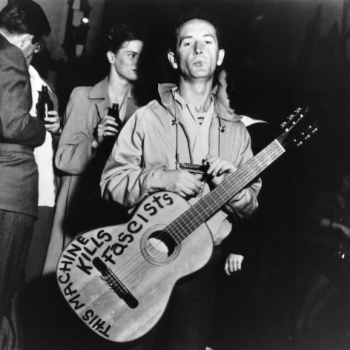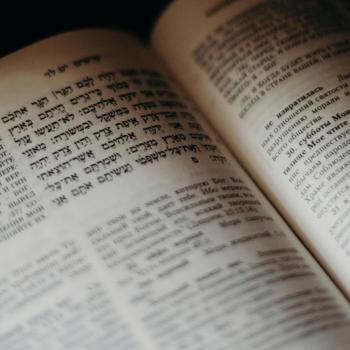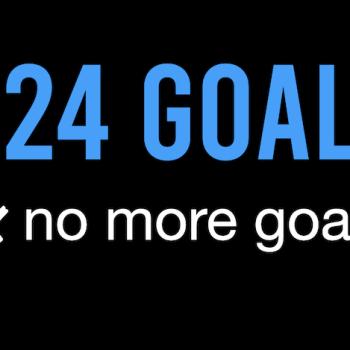 Quick Review of a Classic Book
Quick Review of a Classic Book
Moses’ tactics included both criticism and energizing; themes which are sustained throughout the book. Criticism should not be seen as akin to whining and complaining, but the critique he advocates is a robust public expression of the grief of a people who suffer oppression. The cries of the people constitute the complaint which is aimed more toward YHWH than toward the imperial ruler and has a dismantling effect on the empire. (i.e. “how long will you let this go on…)The energizing message envisions a new reality that does not yet exist. It is called into being through the freedom of God.[4] Energizing names the new reality and provides a narrative which allows the community to imagine this future. This prophetic imagination is doxological in nature – artistic, poetic, creative and new – but rooted in God’s freedom to act as God wishes.
The result of Moses’ ministry was an alternative community which Brueggemann argues was actually too radical for Israel’s taste. Here he teases out the idea that the prophetic imagination is not merely a taste for social action, but it is more profound than that. It is concerned not with societal betterment, but with matters of linguistics and epistemology.[5] This seems an important distinction for Brueggemann. He says this is a direct result of the freedom of God which “is more than any religious movement can sustain for very long.”[6]
From there he moves into an incredible discussion of the life and ministry of Solomon. In this section he crafts a description of what he calls the “Royal Consciousness.” You can’t understand the book without getting this concept of Royal consciousness. The reign of Solomon can be seen as a rejection of the Mosaic imagination and a total change in values toward: affluence, oppressive social policy, and the static religion which closed the door on the freedom of God and allowed the king a monopoly on power. They also would provide an environment of satiation which the empire can achieve. Moses was a radical and his vision was radical. Solomon was an imperialist along the same lines as Pharaoh, who was finally concerned with the self-preservation of the kingdom.
Here Brueggemann can sketch out his paradigm for the prophetic imagination. There must exist a royal consciousness, characterized by Solomon, which is committed to satiation paralleled by an alternative prophetic conscience, characterized by the Moses and the prophets, which is devoted to a covenant with YHWH.[7]
Brueggemann wants us to embrace the reality that we are all held captive by the royal consciousness to some extent. The real question, then, is can we imagine anything else for ourselves and our world?[8] In this environment, the task of the prophet is not initially to lead a movement toward social renewal, but to lead the people in creative, artistic, public lament. This lament is the prophetic critique which shines a light on what Brueggemann calls the “numbness about death.”[9] There is no glossing over the reality, but a public ownership of the problem and a rejection of the royal consciousness’ proclivity to bury its head in the sand. Using symbols mined from the tradition, the prophet publicly reactivates those symbols aiming the discourse toward the “language of grief.”[10] There is no glossing over here, no platitudes. There is the language of anguish, weeping, mourning, lament and pain of death. There is a realization that YHWH is grieving, too, and that we are permitted to join in.[11] This characterizes the life and ministry of Jeremiah who radically criticized the royal consciousness. The result of this prophetic mode is solidarity of pain which begins to constitute an alternative community. This weeping is a “radical criticism, a fearful dismantling,”[12] which must come.
Next, the prophet begins the energizing action. Here the imagination becomes paramount. Where the royal consciousness “militates against hope,”[13] the prophetic imagination inspires it, clearing the way for new gifts to be given. The depth of the prophet’s grief is actually what allows the penetration of hope all the way down into the despair of the people. The prophet cultivates the collective imagination which paves the way for God to redefine the people of God in their specific situation. This is the motion we see at work in Second Isaiah. The resulting amazement and wonder in the God who inverts the power structures, gives a new song to those who grieve, birth to the barren, and nourishment to the hungry[14] will actually bring the new community to the edge of their seat, not grasping but waiting in anticipation of what God will do to generate newness in God’s people.
Over the next two chapters Brueggemann explores the prophetic ministry of Jesus using the same criteria of criticism and energizing. He notes the way the birth narratives, kingdom proclamations, compassion, and crucifixion of Christ all serve to call into question the royal consciousness through the cries of the poor, weak and marginalized with whom Jesus displayed full solidarity. There was also the element of energizing amazement in the birth, ministry sayings, and resurrection of Jesus. In particular, the prophetic speech of Jesus had a catalyzing, energizing effect on the minority community. This speech, creative, parabolic, poetic, sharp and hard, called forth a new imagination from the symbols and collective memory of the people. But the energizing action of Christ found its most potent form in the resurrection through which Jesus embodied the new future provided by God.
Finally Brueggemann reflects on the role of the prophetic ministry within parish ministry. It is here that I think he leaves the matter quite open to the reader to decide what course of action to take, as if he knows that some will simply not be able to bring themselves to heeding his call. It is as if his masterfully crafted argument, well stated and succinct, has built to a climax which, in true prophetic fashion, laments the state of the church while energizing only those with eyes to see the new reality which comes to us from the future of God, and those who are in some way on the margins.
[1] Walter Brueggemann. The Prophetic Imagination, Minneapolis: Fortress Press, 2001.
[2] Ibid. 115.
[3] Ibid. 6-7.
[4] Ibid. 16.
[5] Ibid. 21.
[6] Ibid. 22.
[7] Ibid. 37.
[8] Ibid. 39.
[9] Ibid. 41.
[10] Ibid. 46.
[11] Ibid. 54.
[12] Ibid. 57.
[13] Ibid. 60.
[14] Ibid. 67-78.












